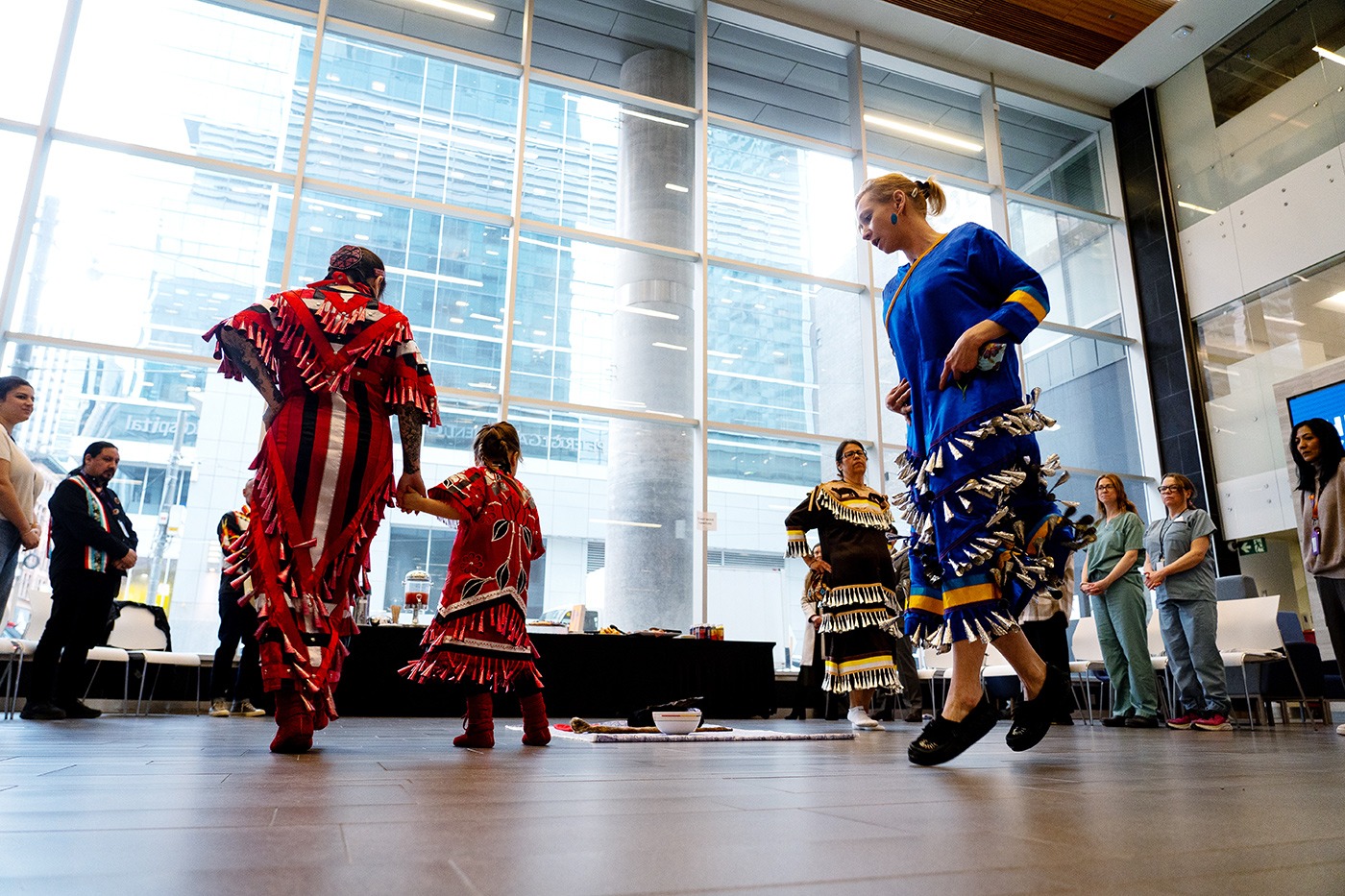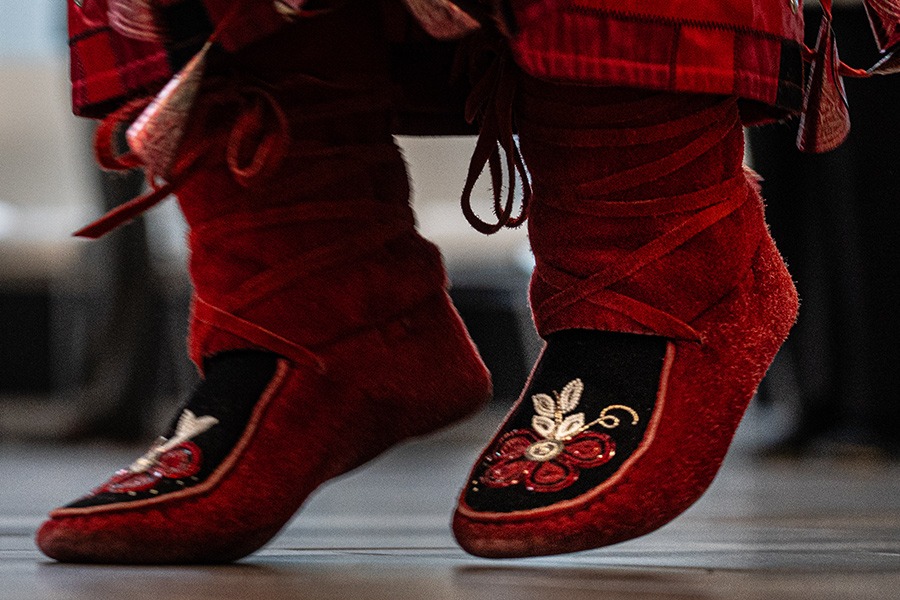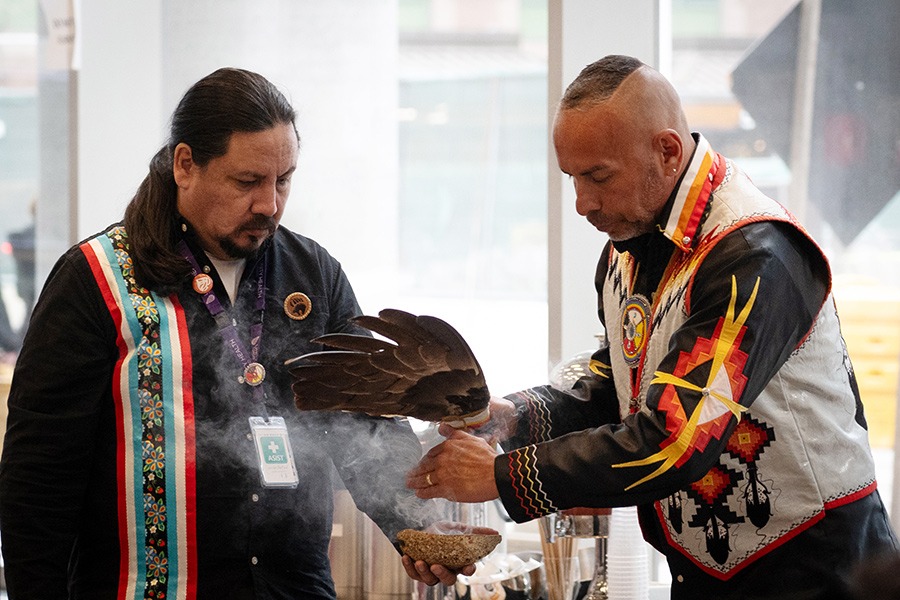
Dance for Healing at Unity Health Toronto: A Way to Share Our Hearts
STORY, PHOTOGRAPHY AND VIDEOGRAPHY BY KEVIN VAN PAASSEN
The metallic din of the Jingle Dresses fills the room as a single drum keeps beat. With precise and deliberate footwork the dancers move in a slow, circular pattern, their dresses shimmering as hundreds of tin cones create a rhythmic and soothing sound.
“If we were to close our eyes and we hear the sound of a Jingle Dress, it would sound similar to that heavy rain falling on the lake,” said Knowledge Carrier EJ Kwandibens, Loon Clan, Northern Woodland Anishiinaabe (Ojibway) of the Waahbiidaahgaah (Whitesand) First Nation, told those in attendance.
The ceremony, called Dance for Healing, was hosted by the Office of Indigenous Wellness, Reconciliation and Partnerships (OIWRP) at Unity Health Toronto and was held at the health care network’s three hospital sites last month.

The project began last year, when Roberta Pike, director of the OIWRP team, had an idea that she hoped would help bring her new team together while deeply connecting them to their culture. Along with Pike, the team includes an Indigenous physician, several Indigenous Wellness Specialists and an Indigenous Cultural and Ceremonial Facilitator.
Enjoying this story? Sign up for the Unity Health Toronto newsletter, a monthly update on the latest news, stories, patient voices and research emailed directly to subscribers.
Through the Joy Fund, a program that awards Unity Health teams’ financial resources to implement ideas or solutions that increase joy in work among their colleagues, Pike saw an opportunity for her team to learn how to create a traditional garment together, while also strengthening their sense of teamwork and unity.
“I figured that this would be an excellent opportunity for us to spark some joy in the work that we’re doing by learning how to make a piece of regalia, and to sit down and get to know one another through that process,” said Pike. “There really is a lot of opportunity to get to know your peers when you’re working on making and creating something together.”
Sharing the spiritual significance of Jingle Dresses
Under the guidance of Kwandibens, who is also an expert in designing and creating Indigenous regalia, the OIWRP team set out to make their very own Jingle Dresses. At the same time, they were also being taught how to perform the sacred dance and understand its deep spiritual significance.

“The Jingle Dress is a healing dance,” explained Pike. “And the way in which we could pay it forward was to be able to offer and share a Healing Dance with the whole of the Unity Health community.”
Sacred healing dance helps build relationships
Finally, after countless hours of preparation, and with dozens of patients, staff, and volunteers in attendance, the dancers donned their sacred regalia. Attendees were invited to prepare a tobacco tie and learn about the healing power of the Jingle Dress – sometimes referred to as the ‘Medicine Dress.’
Then, as the music began to rise, the dancers’ feet gently began to pat the ground. They moved in a slow circular pattern around the room, the swishing sound of their sacred dresses filled the room. And with every beat of the drum and every measured movement, prayers rose—carried by the rhythm, held in the small tobacco ties, offered up for healing.

Afterwards, Pike reflected on the significance of the event for her team and for the entire Unity Health community.
“It’s an incredible part of our culture. And it is strength building, to be able to share that with non-Indigenous people is about educating people about the power of alternative ways of healing, and it is also an opportunity to build better relations with non-Indigenous people,” said Pike.
“It’s a way in which we can share our hearts with one another.”
***Note: Normally photos and video recording of these sacred ceremonies is prohibited. However, in this case, the organizers and participants decided to allow it for the purpose of informing and educating our audience about Indigenous culture and traditions.
